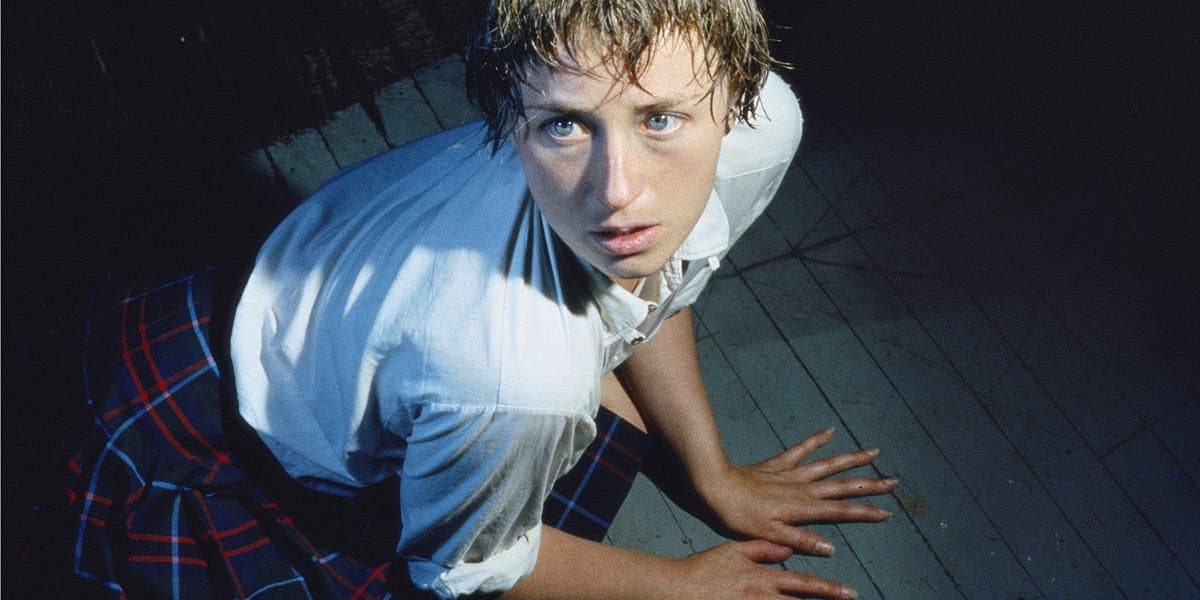

Cindy Sherman
Learn moreUntitled #92 1981
Courtesy the artist and Metro Pictures Gallery Purchased 1983
More detail | PermalinkUntitled #92 and Untitled #93 are from a series of 12 Centerfolds made by Cindy Sherman in 1981. Sherman herself poses in a range of situations, each suggesting heightened emotional states and violent narratives. The Centerfolds continued the investigations into female identity that Sherman began in the mid 1970s. After studying painting at Buffalo State College in New York, she started to explore issues that interested her by dressing up and photographing herself performing in imaginary scenarios.
This led to the breakthrough series Untitled Film Stills 1977–80, printed as small black and white images. Sherman cast herself playing archetypal roles constructed for women in popular culture—the femme fatale, the housewife, the office worker. She has described her way of finding her ‘characters’, who she has stated are not biographical but reflections of ourselves: ‘I guess it’s a memory or an image or something, but something clicks.’[1] Becoming aware of the artifice and constructed nature of Sherman’s photography, viewers could then apply this critical thinking to the way that women are portrayed in popular culture.
In the early 1980s Sherman went big and embraced colour. The Centerfolds images impacted audiences with their size and panoramic format, and are obvious references to the centrefolds in men’s erotic magazines such as Playboy, where women’s bodies are objectified. The women Sherman is playing often look frightened or upset, suspicious, anxious or threatened—though it is characteristic of the artist that she is able to create ambiguous, hard-to-pin-down images over which the viewer can project their own narratives and fantasies. In each of the works the woman is seen from above in a high angle shot, recumbent, supine and passive, reacting to something unspecific that has happened to her. Vulnerable to the gaze of the viewer, the audience is cast into the role of voyeur. The emotional power of the figures is augmented by the uncomfortably tight framing: Sherman wanted her viewers to feel uneasy in their presence—critic Andy Grundberg found them to be, for example, ‘embarrassingly intimate’.[2]
In other work Sherman shows the constructed nature of her imagery more blatantly, such as the Untitled Film Stills, where the shutter release cable was often visible in Sherman’s hand, and in later series she often uses the grotesque to heighten the effect—false breasts and noses for example—trying at times to be ‘as ugly as I can possibly be’.[3] The relative subtly of the Centerfolds gives them an immediate emotional power and appeal that drags the viewer in, with interesting consequences. Initially commissioned by Artforum, the Centerfolds were never published in the art magazine. The editor felt that they would be misunderstood—that readers would be unable to distinguish between a critique of the genre and the genre itself. With their apparently voyeuristic point of view, it was thought that they would be interpreted as reaffirming misogynistic views of women.
Anne O’Hehir
[1] Gerald Marzorati, ‘Imitation of life’, ARTnews, vol. 82 no. 7, September 1983, p 81.
[2] Quoted by Lisa Phillips in ‘Cindy Sherman’s Cindy Shermans’, Cindy Sherman, Whitney Museum of American Art, New York, 1987, p 15.
[3] Quoted in Cindy Sherman, Queensland Art Gallery/Gallery of Modern Art, Brisbane, 2016, p 9.

